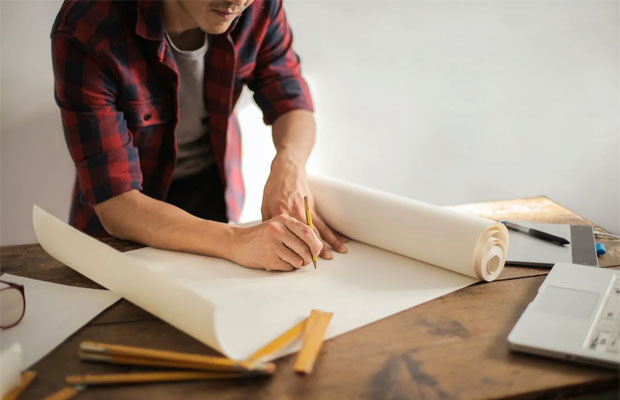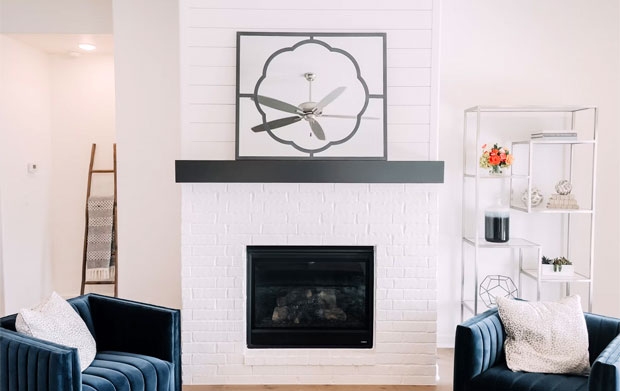1930s House Renovation: Blending Vintage Charm & Modernity

1930s House Renovation: Blending Vintage Charm & Modernity
The streets of London are a reflection of a vintage charm that is elegant, soothing, and awe-inspiring at the same time. With houses from different eras, the skyline blends vintage and modernity.
However, performing repairs and upkeep of a traditional house is vital to differentiate vintage from old. Moreover, to maintain utility, adding new features becomes necessary. Fittra can help find the perfect balance between modern utility and vintage charm by providing exceptional services for home renovation in London.
The architecture from the 1930s stands out prominently due to its quick and cost-effective build, combining functionality and elegance. Despite over 3 million houses from the 1930s all over the UK, renovating each house is a different experience.
However, the following are some standard features of a typical 1930s house:
- Layout: the most common layout of a 1930s house consists of a front hall, rear kitchen, two reception rooms, and three bedrooms.
- Garage
- Big plot sizes
- Bay windows
- Tiled fireplaces
- False beams
- Wood floorboards and paneling
- Diamond pane windows
- Pitched roofs
- Intricate molding
Any successful 1930s house renovation should be able to preserve this architectural design and façade that defines its era. Moreover, while a lot can be replaced, a 1930s house renovation involves more repair and restoration.

What To Expect From A 1930s House Renovation
While a 1930s house has a beautiful vintage charm, it can often be dull and detached from the surroundings, unable to make the best use of the large plot size. Therefore, the renovation should be able to add brightness and openness to the vintage qualities of the home.
In general, a 1930s home renovation in London consists of the following:
- Fireplace Replacement
A 1930s fireplace was bulky and tiled with beige, pale yellow, and light brown colours. One can either replace them with sleek and modern fireplaces to match the house’s interiors or remove them altogether and make space for other things.
- Preserving The Layout
A 1930s house is defined by its layout and flow that needs to be preserved. Any modern feature required can be adjusted within the same design. However, this requires removing non-load-bearing walls to open space without compromising the architecture.
To preserve the layout, it is also vital to repair features such as arched doorways and built-in cabinetry, if any.
- Creating Contrast
Taking complete advantage of 1930s design and architecture, you can accentuate the distinctive and strong lines by adding contrasting colors that increase visual appeal.
However, you can opt for soft pastels, rich jewel colors, and muted tones such as dusty rose and deep navy to preserve the color scheme. Such hues also allow the architectural design to shine through.
In addition to a repaint, you can highlight features with crown molding and waistcoating. Moreover, glass, metal, and polished wood can add to the house’s aesthetic.
- Split Level Layout
Split-level layouts provide the best solution for practical living spaces when creating an open-plan space. These are best used for house extensions, helping distinguish the old from the new and connecting the layout to the outer sections, such as the garden.
- Highlighting Original Features
Original unique features of a 1930s house, such as stained glass, are worth preserving in any house furniture. House renovators generally create a neutral backdrop around it to help it stand out.
Some other original features that can be repaired and preserved include wood paneling, arched openings, and curved windows.
- Refurnishing Wood Panelling
Wood paneling is one of the most attractive features of a 1930s London home. However, they usually came in dark brown. To help liven up the house without compromising the vintage charm, you can add a touch of color to the wood paneling.
It is also vital to perform necessary repairs and polish it for the right look. You can also install reclaimed timber to add warmth to the look. In addition to this, you can contrast the hardwood floors with vintage-inspired wallpapers or muted floral motifs to further bring out the vintage charm.
- Loft Conversion
Depending on your preferred style, you can choose from various loft conversion styles, which experts will guide you better after analyzing the house space.
- Replacing Metal Windows
A part of the 1930s Art Deco trend, metal windows with curved corners add contrast and highlight the exterior and interior of the homes, adding richness to it. You can also opt for aluminium or painted timber windows in the same finish.
- Integrating Modern Amenities
When adding modernity to a vintage home, you only need to focus on adding utility and amenities. This calls for a balanced and delicate addition of modern conveniences such as retro-inspired refrigerators, classic cooking stoves, and plumbing and electrical systems, all with the latest technologies and functioning. Incorporating features like aluminum roof lanterns can further enhance the fusion of vintage charm and contemporary functionality, allowing natural light to flood the space while maintaining the home’s architectural integrity.
- Replacing Heating and Cooling Systems
Since the primary heating source in any 1930s house was a fireplace, adding modern heating systems such as gas inserts for fireplaces or even a centralized heating system for energy efficiency is essential.
Similarly, for cooling the house, you can go for vintage-inspired ceiling fans or a concealed air conditioning system to add to the comfort of your home.
- Strategic Furniture Choices
When renovating your home, it is vital to find furniture pieces that are both usable and vintage-inspired. You can opt for wooden furniture, curved armchairs, and sofas with muted fabrics or geometric patterns.
Similarly, you can opt for a wooden table and chairs in the dining area, pairing them with vintage-inspired lighting such as chandeliers to add to the vintage look and ambiance.
Besides, depending on the original layout of your 1930s home, a designer or architect can suggest various other renovations and remodelling that can help add a modern touch of utility to the vintage charm of your house.

To Sum Up
The 1930s was a glorious time in the field of architecture and design. With wood paneling, bulky fireplaces, stained glass, and large garden spaces, the vintage charm of a 1930s house stands out from the rest.
With modern techniques and architecture, preserving this charm while adding utility and ease of living to your vintage house is easily possible, giving you the best of both worlds. Preserving the vintage features while remodelling the floor plan can help strike the right balance and blend modernity into the vintage charm.
Collaboration – Guest Article.




